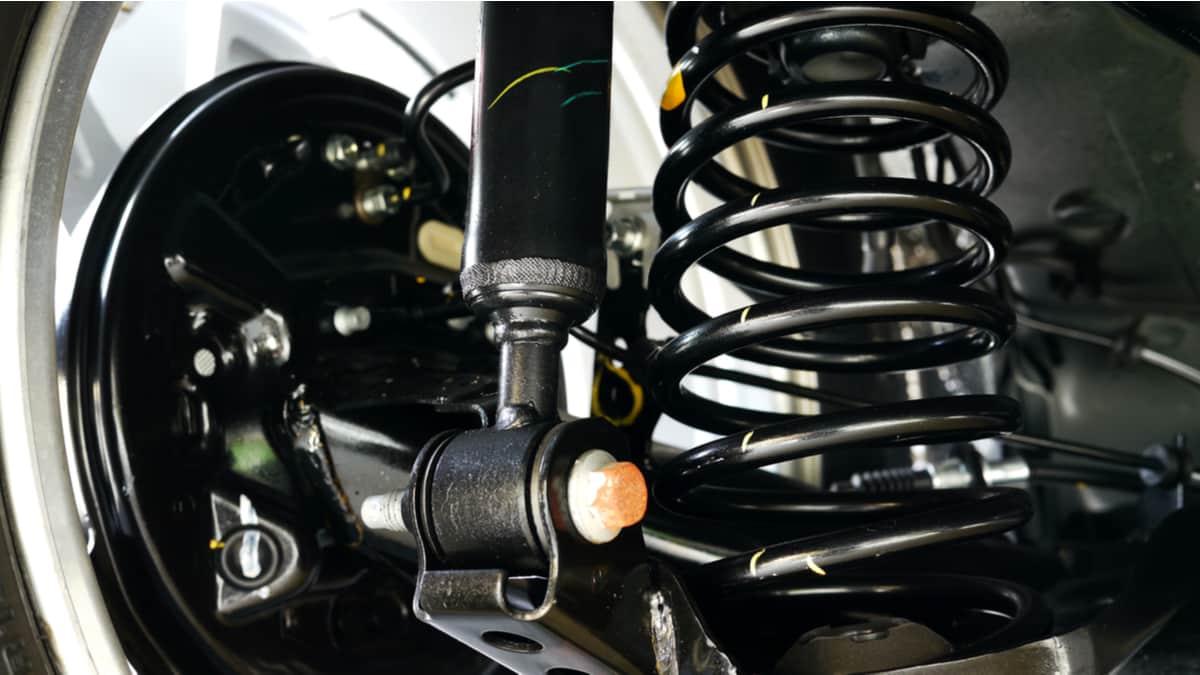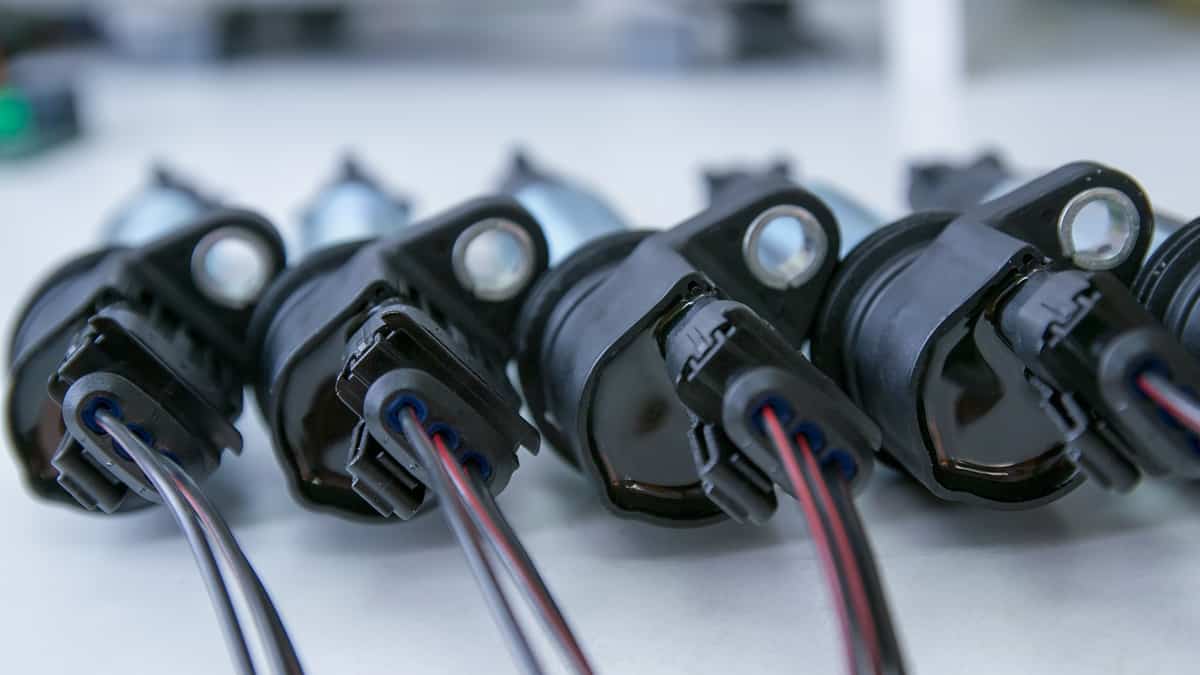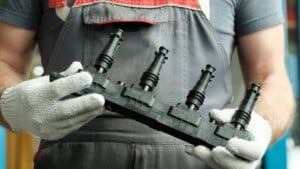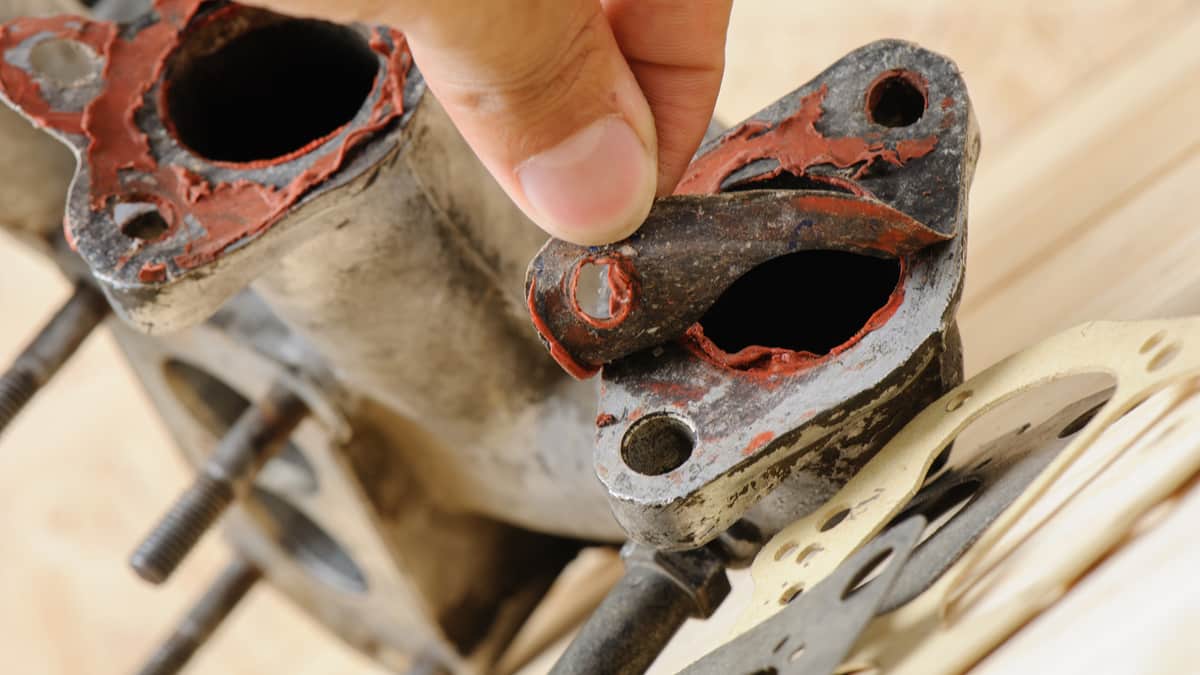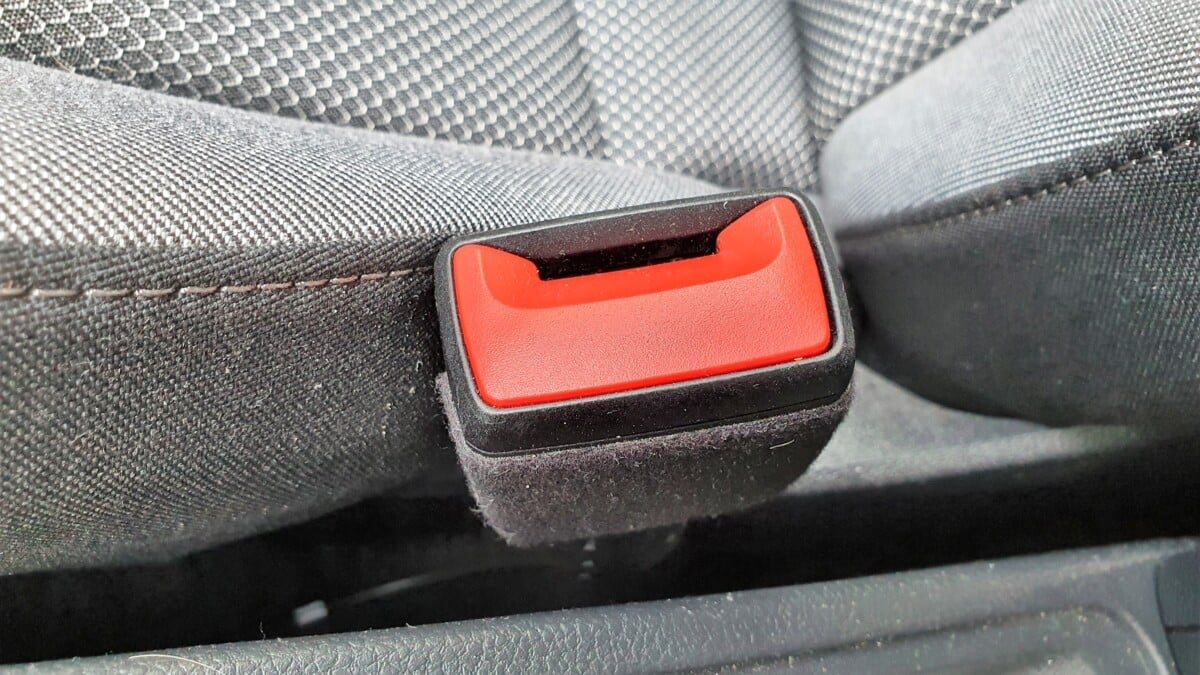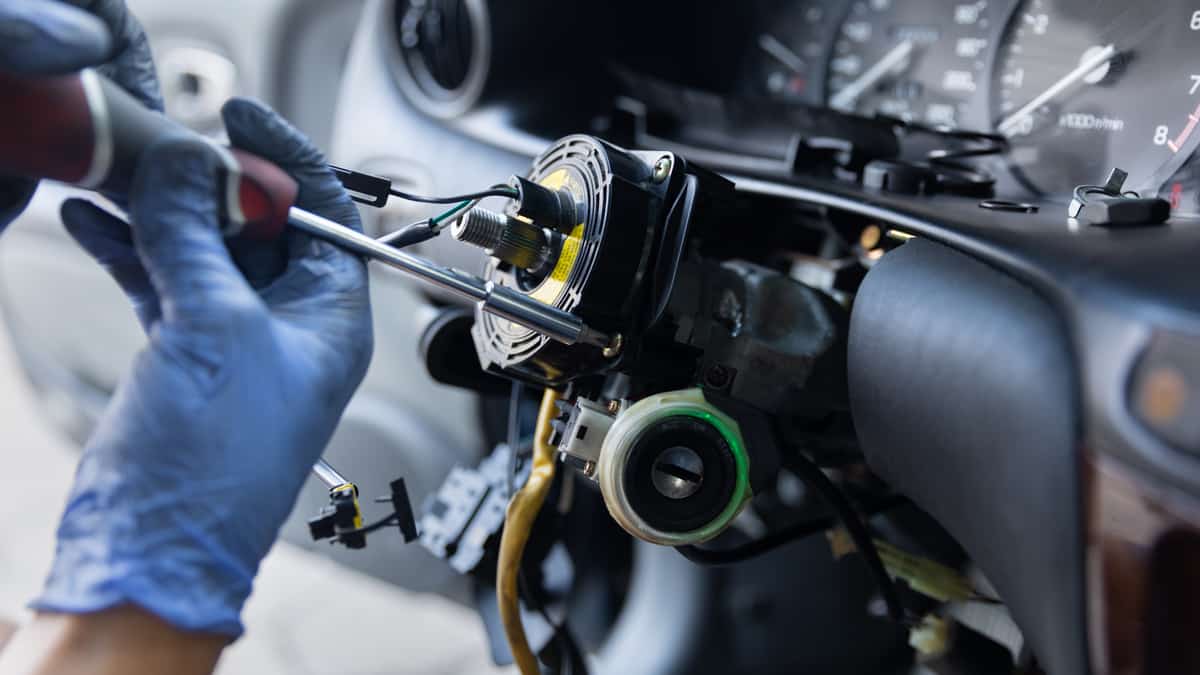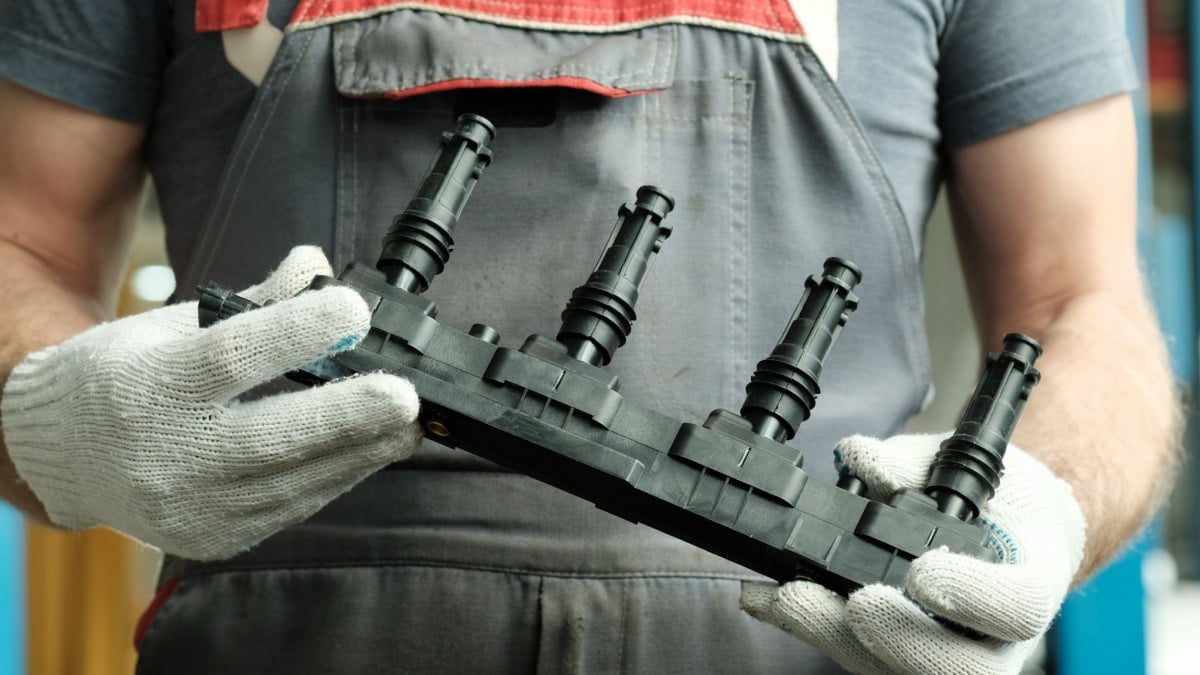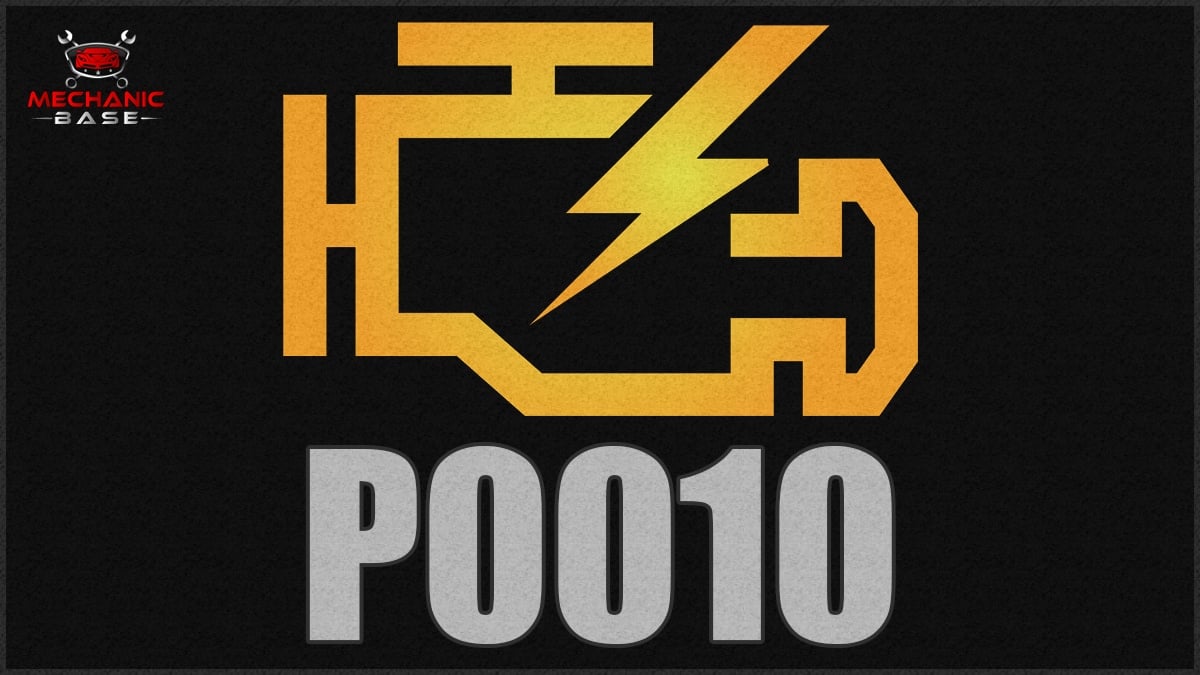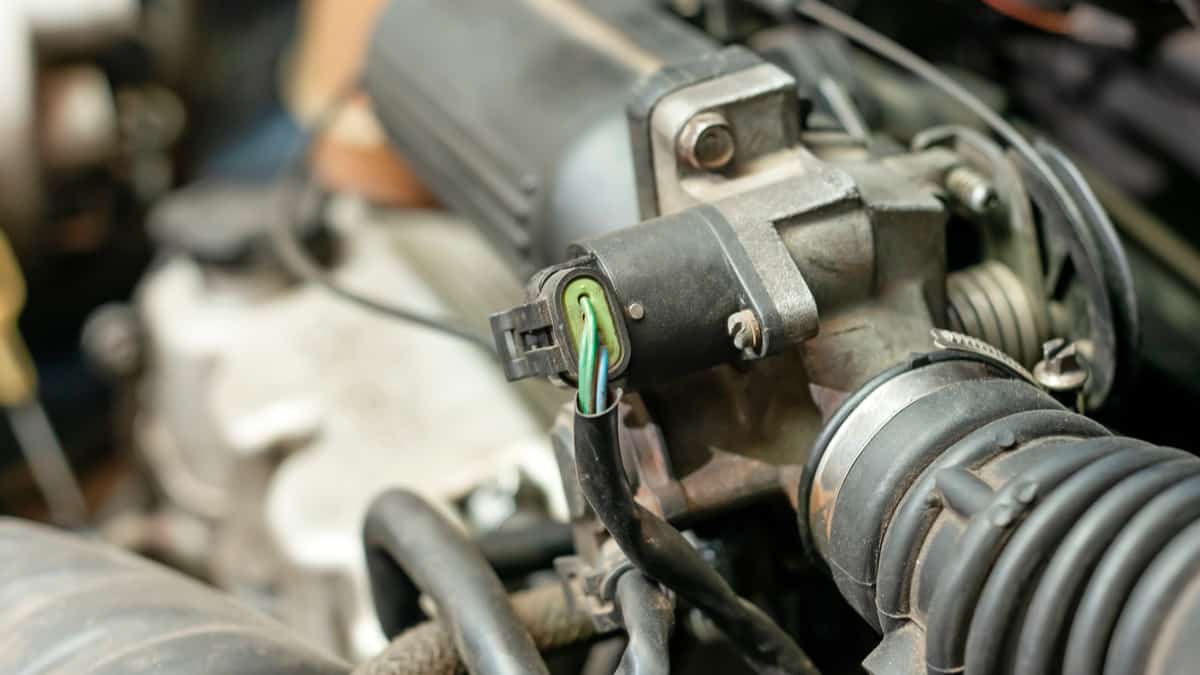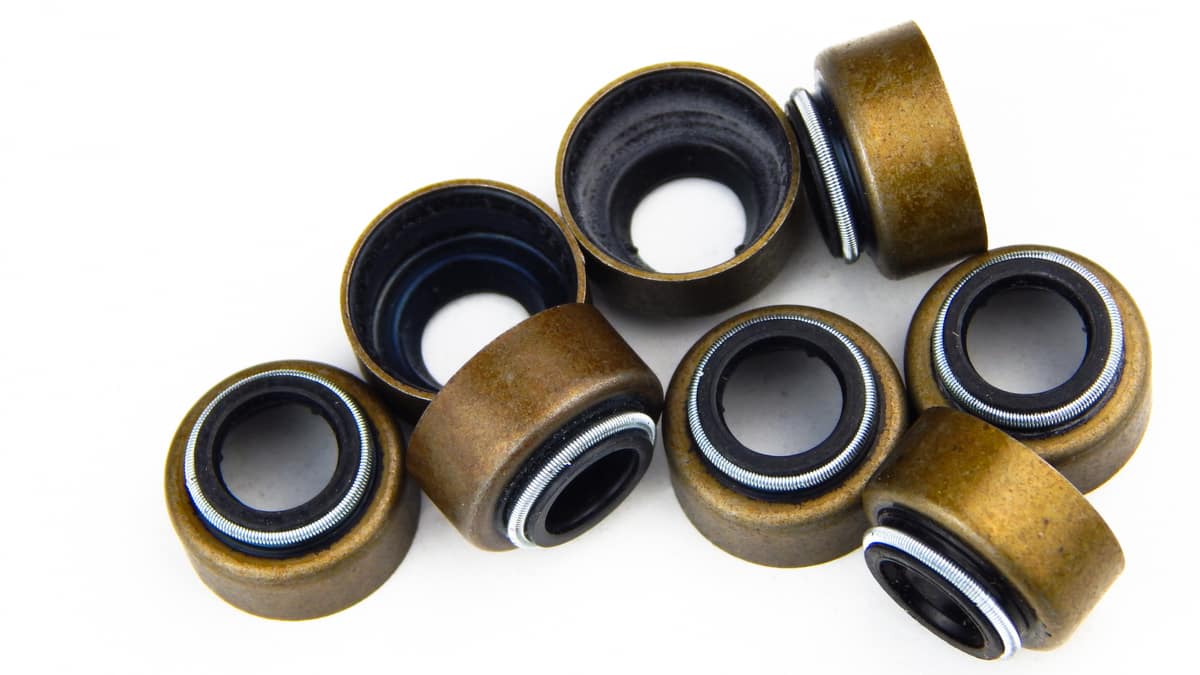The coil spring is part of your car’s suspension system. When the ride gets rough, it could be one of the symptoms of a broken coil spring, but there are others to consider as well.
In this guide, we examine the top bad coil spring symptoms and explain this part’s function. We also show you where it’s located and discuss both the replacement procedures, as well as the cost. At the end of our guide, you’ll find some helpful answers to coil spring questions.
Symptoms Of A Broken Coil Spring
When a coil spring breaks or goes bad, it creates a sagging area to the vehicle. You will also feel more bounce as you drive, making the journey less enjoyable. Bad coil springs cause uneven tire wear, strange noises, especially while taking a corner and a distinct rattling noise.
Here are the top symptoms of a bad coil spring.
1. Sagging Corner

Coil springs are needed to balance out the weight of the vehicle, so if one breaks or fails to do its job, you are going to see sagging occur. The more weight you have loaded in the vehicle, the more you are going to notice the sagging.
Depending on which side is sagging, you may also feel it when you sit in the driver’s seat. If your vehicle starts leaning while driving, it’s time to look at the springs. It should also be noticeable when you look at the vehicle on a flat road. Take a peek and the level of the two bumpers to see if any corner is sagging.
2. Bouncing Movements

If you are heading down the road and feel more bounce to the drive, it’s likely that there’s something wrong with the coil springs. The vehicle is designed to handle minor road imperfections without transferring the movement to the cabin. However, when the coil springs fail, those bumps are going to be more pronounced.
This is another problem that’s going to get worse as time goes on. At first, you may just notice a little extra jostling over bigger bumps until you are feeling every movement.
The trouble with this problem is that you can lose control of the vehicle if it bounces too heavily, especially when traveling over uneven terrain. Not only that, but you could make your passengers sick from all of the bouncing.
3. Loud Noise When Turning (Front Coil Springs)

When the coil springs and shocks work as intended, you shouldn’t hear any strange noises. The suspension operates quietly and you wouldn’t even know it was there. However, as the springs fail, especially in the front, you are going to hear more noise due to the vehicle’s weight on the suspension.
One of the most common noises is loud clunking, especially while turning. The loudness of the sound helps indicate how severe the problem is. However, this sound can also come from other suspension parts failing, so it’s important to perform a complete inspection right away.
4. Uneven Tire Wear
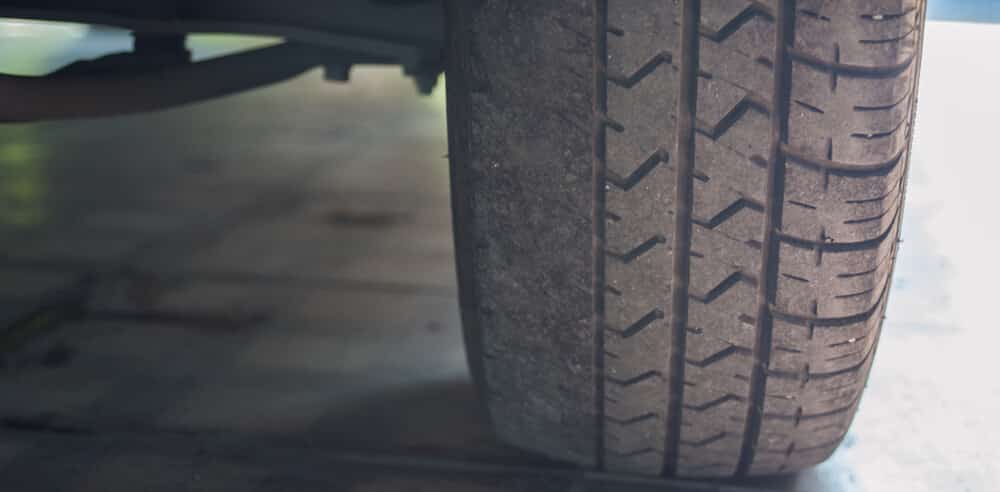
As the suspension system weakens and the coil springs fail to do their job, the tires won’t make adequate contact with the road. Excessive bouncing can cause uneven tire wear.
The weight distribution on the tires also changes, which can be seen over time as the springs fail. If you haul heavy loads, riding on bad tires can be detrimental. Replacing bad coil springs immediately helps you get more life out of the tires.
5. Rattling Noise
Along with the clunking you might hear during turns, the suspension is going to start rattling. This rattling sound will increase with intensity the worse the springs get.
Rattling may also increase as you accelerate or hit bumps. If you catch the rattle early enough, you may avoid other problems, so it’s important to pay attention.
What’s The Function Of A Coil Spring?
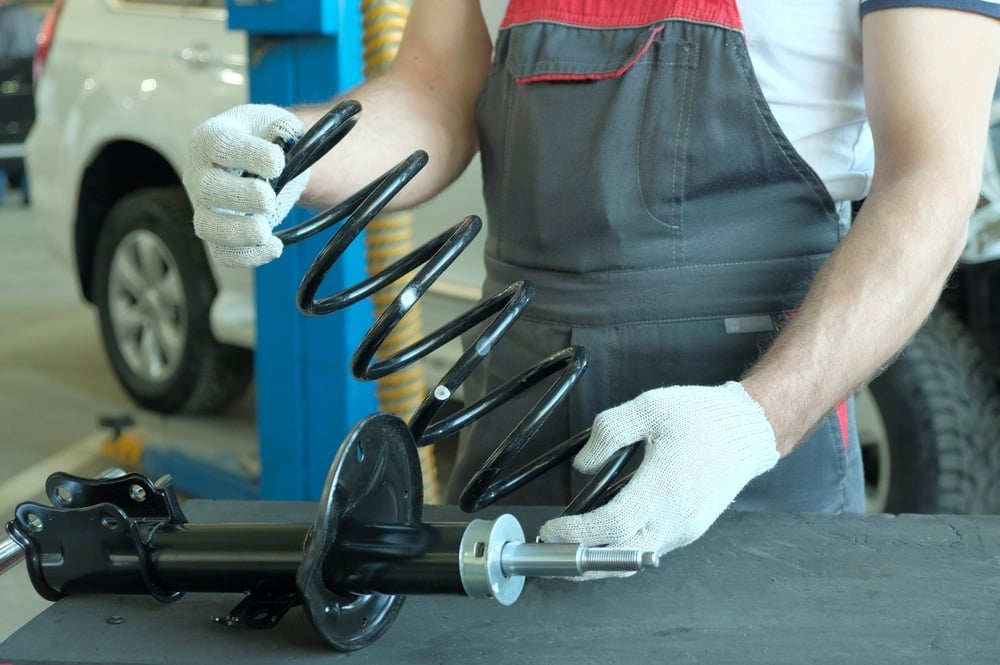
Coil springs are used to stabilize the vehicle, especially while going over bumps or around corners. The springs keep the vehicle stable, so all four wheels can adequately make contact with the road.
Before coil springs were used, vehicles sometimes had leaf springs. These are still used on some heavier vehicles, but they are known for making the suspension stiff. Coil springs add more range of movement than the leaf springs.
The coil spring compression and rebound work with the damping from the shocks to provide a smooth ride. The coil springs also affect the ride height of your vehicle.
There are also some cars that use a coil-over shock absorber suspension, known for short as the coilover. With this design, the shocks are mounted inside the coil spring.
Where Are The Coil Springs Located?
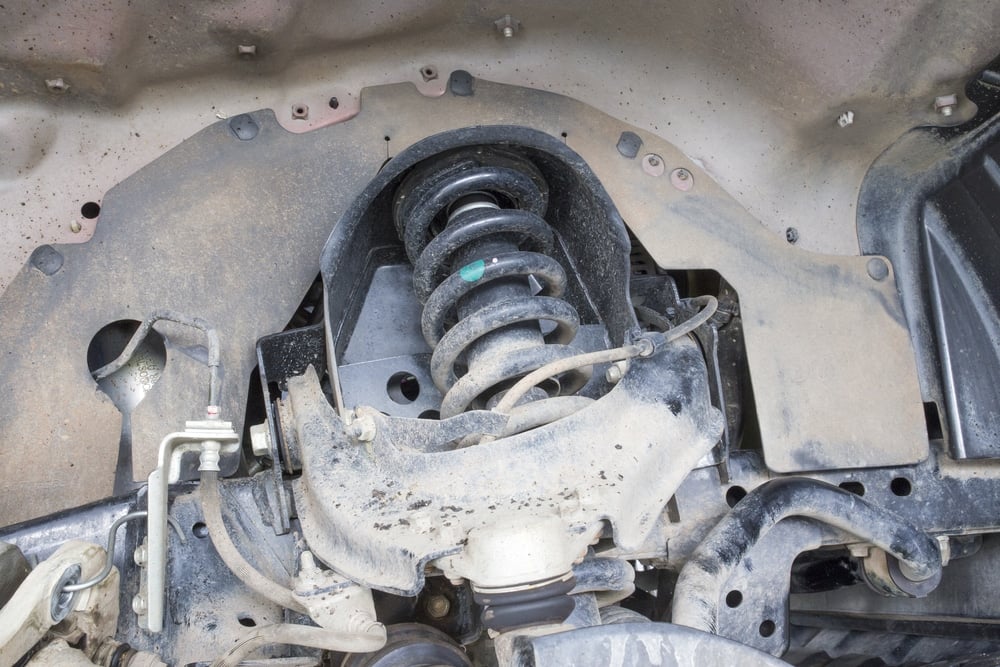
Many of today’s cars contain four springs, one on each corner to support the frame. These coils are often installed with struts.
The coil spring’s upper part is just below the spring perch with a coilover suspension. The bottom part is on the lower control arm, which helps to keep the wheels in place. With the spring sitting above the control arm, it can absorb any shock that comes from below.
This design ensures that you don’t feel all of the imperfections of the road from within the cabin. It also helps to maintain control while driving because the tires remain firmly planted on the road.
How Do You Replace A Coil Spring?
Before you replace anything, you should visually check the coil spring. They are located close to the wheel above the axle. You may need to lift the vehicle to get a better view of the spring. If the break occurred near the wheel, it may be easy to spot. Yet, you may have more trouble if it’s broken in a hard-to-see area or near the middle.
Once you’ve confirmed that the spring is broken, it must be replaced. You can’t repair a broken spring. While this sounds like an easy fix, all automotive springs are heavily compressed. If they are removed without the proper tools and procedures, danger awaits.
For this reason, we always recommend letting a professional change the coil springs for you. With the right tools, these are the procedures for removing the front coil springs that they will follow.
- Loosen the lug nuts.
- Raise the vehicle off the ground.
- Remove lug nuts and wheels.
- Take off the brake caliper.
- Remove tie rod ends and sway bar end links.
- Take off the front shocks. Some shocks have two bolts on the bottom with one on the top.
- Compress the coil spring.
- Remove the ball joints with the control arm supported.
- Remove the compressed coil spring.
- Install new coil springs.
- Put everything back together in reverse order.
- Lower the car and take it for a test drive.
Additionally, the procedure for the rear coil springs may look a little different because they are installed over the rear axle where steering components aren’t a concern. Here’s how most are done.
- Loosen the lug nuts.
- Raise the vehicle off the ground.
- Remove lug nuts and wheels.
- Take off the rear shocks.
- Compress the coil spring.
- Remove the rear sway bar links.
- Remove the compressed coil spring.
- Install new coil springs.
- Put everything back together in reverse order.
- Lower the car and take it for a test drive.
It’s always recommended to have coil springs changed in pairs. If you are replacing the front left spring, make sure you get the right one replaced as well. You may also decide to have new shocks put on at the same time if it’s been a while since that was done.
How Much Does It Cost To Replace A Coil Spring?
Coil springs usually only cost about $55 to $150 each for the part. However, if you are replacing all four, that price quickly adds up to $220 to $600. If you can’t replace the coil springs at home, you need to pay a mechanic, which may add another $350 to $800 for a complete replacement.
If you wanted to stick to just replacing the front or back pairs of springs, you could cut down on this cost. However, you may need to add in other services, such as shock replacement, at the same time.
Can I drive with a broken coil spring?
Whether you have a broken coil spring or a bad shock, you shouldn’t drive any further. Driving with a damaged suspension can cause driveability issues, making it difficult to maintain control of your vehicle. Additionally, the suspension can incur more damage if you drive long-term on broken components.
How long does it take to replace a coil spring?
Professional mechanics have the tools and expertise to finish the job quickly. With front springs, the shop may need one to three hours in total. Working on the back springs should only take one to two hours. Factor in additional time if the shop is performing other suspension work, such as tie rod ends and ball joints.
Is it OK to replace just one coil spring?
No, when working with the suspension, it’s always best to replace both sides at the same time. This process ensures that the suspension remains even, so there’s not any unusual wear. The only time it may be okay is if the suspension was recently replaced and the other side is still like new.
Will new coil springs improve the ride?
Coil springs have a profound effect on the ride. They increase comfort and handling, especially while driving on a bumpy road. Coil springs can be purchased to match varying degrees of comfort. You can choose a sport-tuned ride for a stiffer feel or purchase some that lower the vehicle.
How serious is a broken coil spring?
It’s a very serious condition. You don’t want to continue driving with a broken coil spring because it could cause you to lose control of the vehicle. Additionally, driving with a broken coil spring can lead to further suspension issues, costing you more in repairs in the long run.
A broken coil spring is one situation you don’t want to ignore. It creates a rough ride that can make traveling dangerous and it leads to other suspension problems. To ensure a smooth and quiet ride, have the bad springs replaced immediately.
This is a job best left to the professionals. It’s easy to get injured or break something if you try to remove coil springs without the proper tools. Save yourself the hassle and take your vehicle to a local shop for more support.
Categories: Suspension
